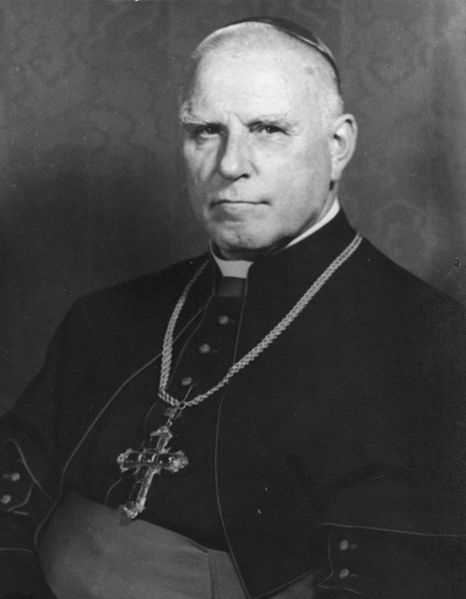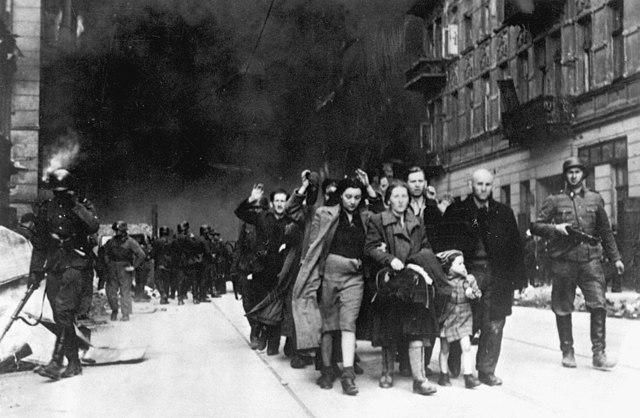Jürgen Stroop was a German SS commander during the Nazi era, who served as SS and Police Leader in occupied Poland and Greece. He led the suppression of the Warsaw Ghetto Uprising in 1943 and wrote the Stroop Report, a book-length account of the operation. Following the defeat of Germany, Stroop was prosecuted during the Dachau Trials and convicted of murdering nine U.S. prisoners of war. After his extradition to Poland, Stroop was tried, convicted, and executed for crimes against humanity.
Stroop in U.S. custody (1945)
Bishop, later Cardinal, Count Clemens von Galen
1943 Jurgen Stroop signed document for his personal Infantry Badge received earlier.
Jürgen Stroop (center, in a field cap) with his men in the burning of Warsaw Ghetto, 1943
The Warsaw Ghetto Uprising was the 1943 act of Jewish resistance in the Warsaw Ghetto in German-occupied Poland during World War II to oppose Nazi Germany's final effort to transport the remaining ghetto population to the gas chambers of the Majdanek and Treblinka extermination camps.
Jewish women and children forcibly removed from a bunker by Schutzstaffel (SS) units for deportation either to Majdanek or Treblinka extermination camps (1943); one of the most iconic pictures of World War II.
Corner of Żelazna 70 and Chłodna 23 (looking east). This section of Żelazna street connected the "large ghetto" and "small ghetto" areas of German-occupied Warsaw.
Resistance members captured at Nowolipie 64 near intersection with Smocza. Hasia Szylgold-Szpiro is on the right.
Captured Jews are led by German troops to the assembly point for deportation. Picture taken at Nowolipie street, near the intersection with Smocza.








